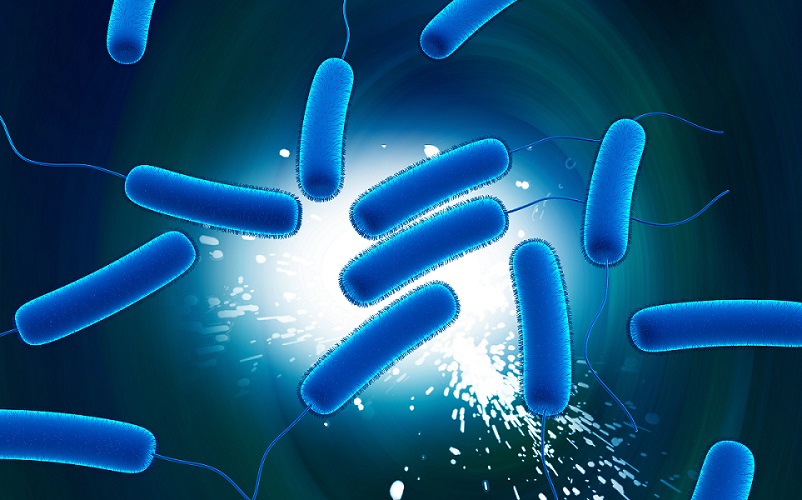The relationship between the chemical nature of bacterial endotoxins and their toxicity and immunogenicity
 The chemical nature of bacterial endotoxins has an effect on the toxicity that these endotoxins cause in other organisms, as well as on the immunogenic effects generated in the organism. In general, bacterial endotoxins are complexes formed by lipopolysaccharide molecules found in the cell membranes of Gram-negative bacteria. The diseases related to Gram-negative bacteria affect humans and animals and, in many cases, are difficult to treat, which is why is important to have effective and bacteria-specific antibiotics.
The chemical nature of bacterial endotoxins has an effect on the toxicity that these endotoxins cause in other organisms, as well as on the immunogenic effects generated in the organism. In general, bacterial endotoxins are complexes formed by lipopolysaccharide molecules found in the cell membranes of Gram-negative bacteria. The diseases related to Gram-negative bacteria affect humans and animals and, in many cases, are difficult to treat, which is why is important to have effective and bacteria-specific antibiotics.
According to what has been demonstrated in the studies of live laboratory colonies, Gram-negative bacteria can release endotoxins to the environment during their growth. But, the highest concentration of endotoxins is produced during the cell lysis of the bacteria. In general, the pathogenic effect of bacterial endotoxins is less pronounced than that of exotoxins, but this does not mean that they do not cause complications that can lead to the death of those affected. These substances are the common pyrogens found in nature. Therefore, the method of LAL (Limulus Amebocyte Lysate) has come to be used for pyrogen testing in the industry and in research laboratories for their detection. To carry out the LAL test, the company Wako has developed a line of reagents and accessories called PYROSTAR™.
The chemical structure of the lipopolysaccharides of each bacteria is what determines the effect produced by the bacteria. Lipopolysaccharides are called this way because they are polysaccharide chains (polymers formed by sugar units) bound to a lipid structure, called lipid A. The lipid A retains its chemical structure in different lipopolysaccharide molecules and is related to toxicity caused by these molecules. However, the polysaccharides bound to lipid A, which vary from one bacterium to another, are related to immunogenicity.
Toxicity is understood as the "capacity to produce damage on a living organism, in relation to the amount or dose of the substance administered or absorbed, the route of administration and its distribution over time (single or repeated doses), the type and severity of the damage, the time needed for the damage to be produced, the nature of the affected organism and other intervening conditions." In the case of bacterial endotoxins, toxicity is associated with the lipid part of their chemical structure, lipid A. The structure of lipid A, the hydrophobic part of the lipopolysaccharides, does not vary from one bacterium to another. Lipid A contains a dimer of phosphorylated N-acetylglucosamine bound to 6 or 7 monomers of fatty acids, which are all saturated. The fatty acids can be found directly attached to the glucosamine dimer or forming esters. The stereochemistry of this glucosamine dimer, in many cases, is the cause of the different biological activity of these lipids while the lipids may also affect the activity of the phosphate groups and the manner in which the fatty acids bind to each other.
The second region of the lipopolysaccharide molecule which is attached to lipid A, is called antigen R and is a short sugar chain. This region typically has been preserved in all Gram-negative bacteria and has no major influence on the toxicity and immunogenicity that is caused by bacterial endotoxins.
Immunogenicity is the "set of properties that enable a substance to induce immunity and/or humoral immunity in organisms or immunocompetent cells". Bacterial endotoxins induce this type of response in men and animals due to the polysaccharides contained in the cell wall. As this is the part that varies from one bacterium to another, the effects of Gram-negative bacteria as pathogens also vary from one to the other.
The structural part of endotoxins that cause immunogenicity is the third region, known as the O-antigen. O-antigen is a polysaccharide chain composed of repeating oligosaccharides which are responsible for the hydrophilicity of these molecules. The different sugars present in O-antigen are the ones that give this antigen biological activities that are as varied as Gram-negative bacteria since which antibody the endotoxins may combine depends on this part of the structure. The virulence of the bacteria also depends on the O-antigen to be intact as it has been observed that mutations of this antigen directly affect the virulence of the strain under study.
LAL REAGENTS AND RELATED ACCESSORIES:
| Kit of 100 PYROSTAR™ ES-F (2 ML) without CSE | Lysate Reagent Water | Control Standard Endotoxin |






